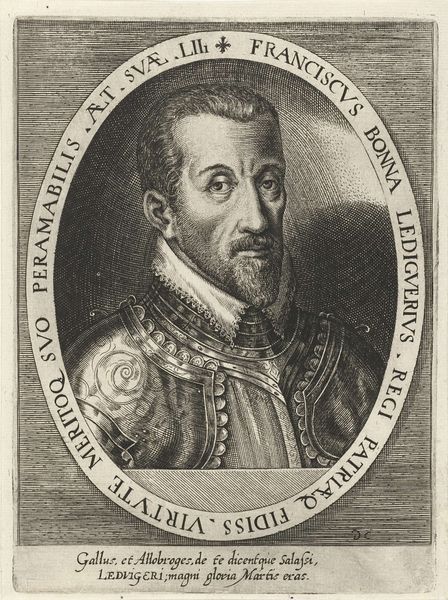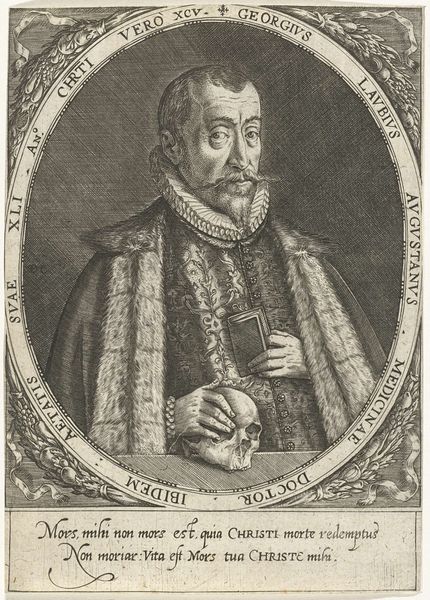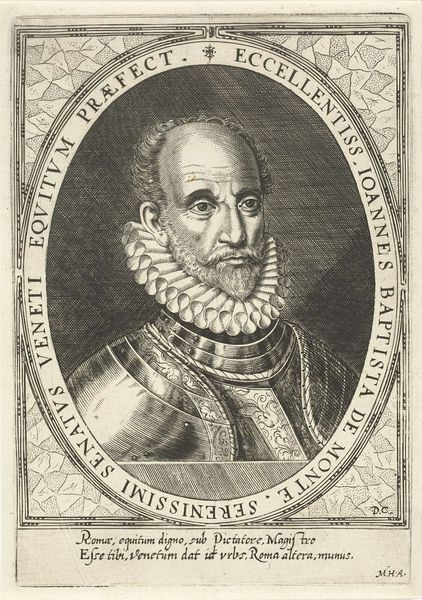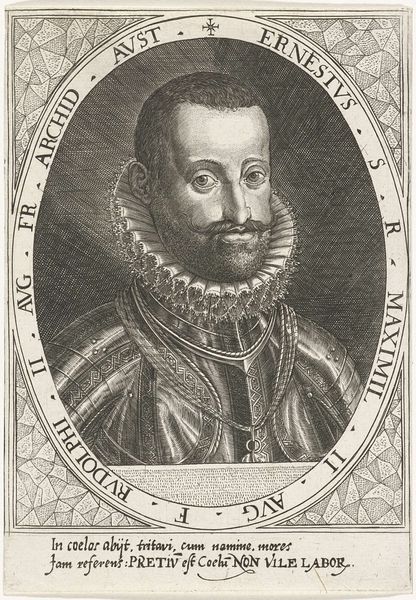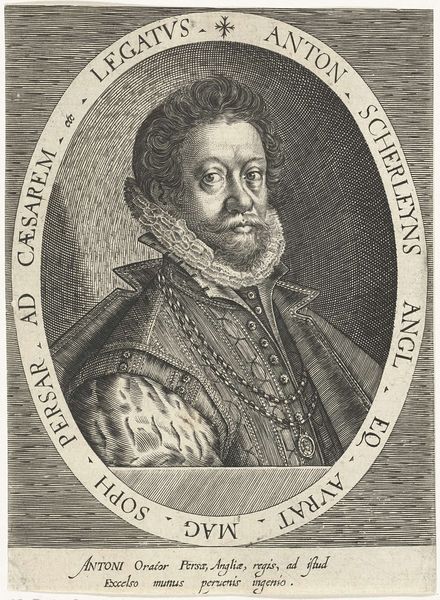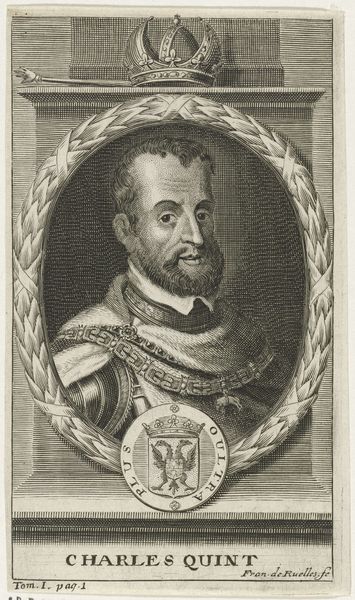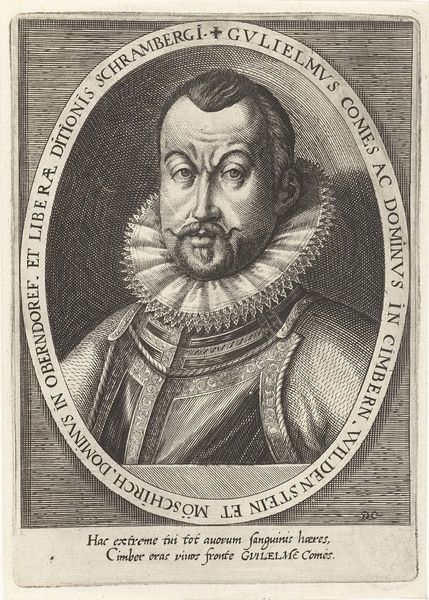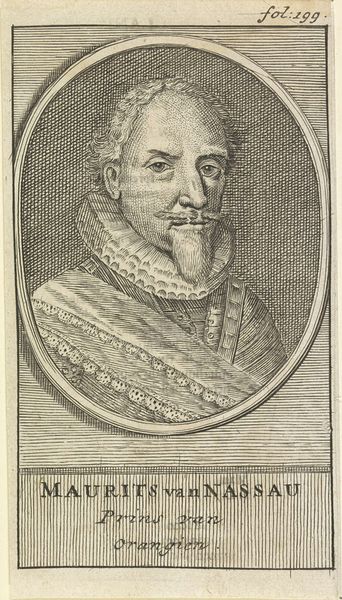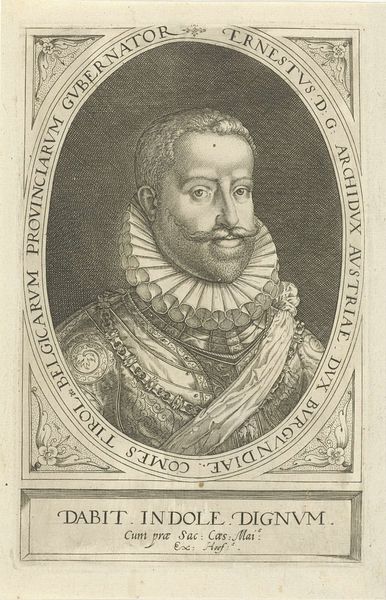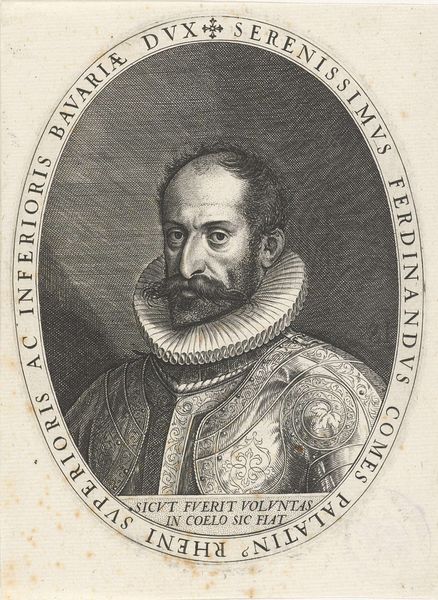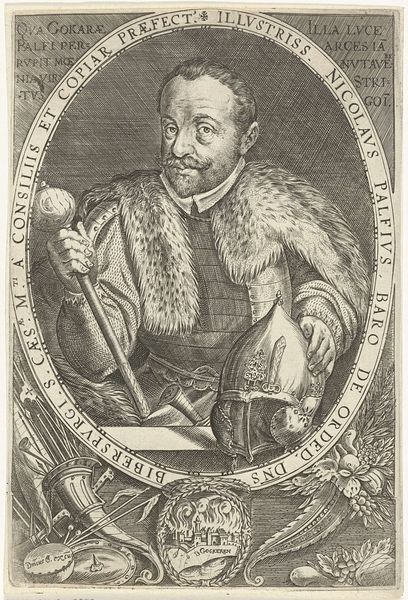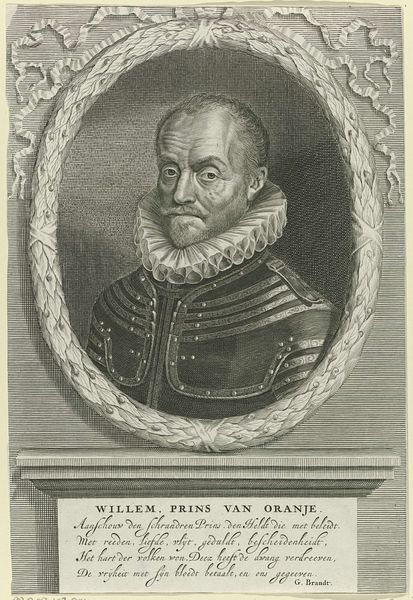
print, metal, engraving
#
portrait
#
baroque
# print
#
metal
#
old engraving style
#
history-painting
#
engraving
Dimensions: height 177 mm, width 128 mm
Copyright: Rijks Museum: Open Domain
Curator: Here in Gallery 7, we see "Portret van Paul Sixt graaf van Trautson," created between 1600 and 1604 by Dominicus Custos. This work, residing here at the Rijksmuseum, is an engraving on metal. Editor: It's remarkable how severe he appears, despite the ornate attire and the somewhat delicate etching style. I immediately notice the somber tone and how the texture of his fur collar contrasts with his hard stare. Curator: The portrait is absolutely emblematic of its era, embodying Baroque aesthetics while simultaneously revealing social dynamics of the period. Paul Sixt was, after all, a significant figure. Consider his roles as indicated within the inscription, his titles, his position as a powerful political player within the Holy Roman Empire. Editor: Those swirling Latin inscriptions, framing him almost as if he were an icon… It makes me think of coins, the way rulers’ faces were stamped to represent power and stability. The visual language employed signifies authority; that firm jawline and unwavering gaze communicate strength. It speaks volumes about representation of nobility through familiar symbols. Curator: Yes, but the work, precisely as a piece of "history painting," also constructs a carefully curated narrative of power that serves the purposes of his lineage and class. How might his contemporaries, particularly those outside his privileged circles, have perceived this image, considering questions of social access and the inequitable distribution of resources and agency? Editor: His family crest might've elicited different emotions - perhaps pride for those connected and perhaps fear from other subjugated groups. Dominicus Custos captured this man in a visual shorthand to create a specific emotional association over the centuries, regardless of a viewer's perspective. It makes you consider the role images had as tools of social cohesion in earlier eras. Curator: Looking at it today also allows us to question the legacies of such figures and the role art played in solidifying power structures that persisted for centuries, highlighting power dynamics in their lasting consequences. Editor: Indeed. Thinking about it, this print, on metal, an accessible material and form, creates a striking and memorable presence, making tangible even now the impression he and those with power sought to impress.
Comments
No comments
Be the first to comment and join the conversation on the ultimate creative platform.
